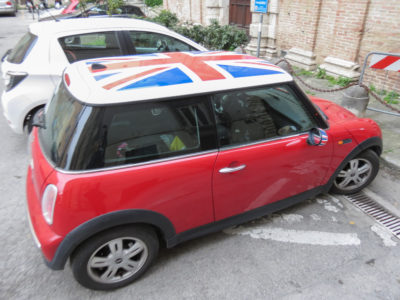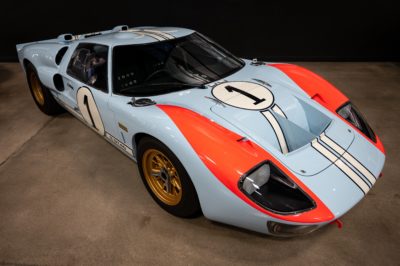

Brands used to be fiercely nationally determined for cars: U.S. for large people carriers, German for luxury sedans, Italian for sporty, red coupés, English for old-money carriages, Chinese or Russian for black and outdated authoritarian styles. The quest for efficiency in terms of penetration in the air, the globalization of style and fashion, coupled with the simplification brought by electric propulsion, could have achieved the dream of the “world model”, something the top manufacturers had on their drawing board in the later part of the previous century. And leafing through the glossy catalogs of new models, especially those coming from the East, gives this impression, time for the legacy manufacturers of the West to change.

BMW MINI with the Union Jack
When BMW acquired Cooper in 2000, the Mini did not become German, we have seen the Union Jack proudly on the roof. Renault is advertising its French origin for the electric versions of its emblematic middle-class 20th century R4 and R5 in its latest attempt to win the hesitant French driver to switch to electromobility.
Ford is shoving aside its European style of the past decades, Focus and Fiesta, in favor of its proud American heritage, Mustang and GT40: Le Mans is in France, and Ford has made history there.

Ford 1966 GTO40 which competed at Le Mans
One possible analysis could be made along the line of the post-globalized world, with big words like protectionism, nationalism, or regional re-shoring. The World Trade Organization (WTO) is close to death, at least quite inactive, leaving car manufacturers in front of regulators, in essence national or regional. If numbers are not the objective anymore, like the 10 million yearly sales mark, global harmonization, in style or manufacturing, may lose a bit of its importance, especially if margins have to increasingly come from the top of the range, in other words, larger vehicles than strictly necessary for the mobility demand on average. And this latter trend faces another constraint, the looming scarcity of the materials necessary for electricity generation and end-use, substituting the fossil constraint for another one, not less ominous.
Shouldn’t that be an opportunity to revisit the specificities of the mobility demand for each market? Along this line, if cars are big in the U.S., blame the distance to cover. If the Fiat 500, the Little Mouse (topolino in Italian), is popular in Italy, blame the narrow streets of the medieval cities. If German cars are fast, blame the lack of speed limitations on motorways. Looks a bit over-simplified? Sure is. But the underlying message remains: cars should be fit-for-purpose with the local, likely national, driving conditions and mobility demand.
And not only dictated by the manufacturers’ business goals, which can be summarized, over-simplified again, for Western carmakers, as the SUV race. This may look state-heavy, but the debate about the fight against climate change points out that market forces cannot, should not, be the sole driver of such a systemic change. If individual decisions only cover 25% of the required climate adaptation/attenuation-related change, it is high time we remember Montesquieu, explaining in the 18th century, in “the Spirit of the Laws”, that human laws (which include regulations) are an artificial way, correctable and adaptable, allowing people to survive on the land they occupy, a mighty definition of societies, so fit for our troubled times of the 21st century.
Innovation should not only be about the internet of things (IoT), like connected cat food dispensers. There is likely value to drive, possibly forcefully or financially, innovation toward environment and climate-smart, low-carbon, mobility, with a lot of effort required to design models that are fit-for-purpose for the local environment, as said above, but also to maximize the use of recycled materials and facilitate end-of-life recycling, standardize and minimize maintenance for extended durability (like for a bike), optimize sharing and transport inter-modality, diversify energy sources (like in hybrid vehicles, combining low-carbon liquid fuels, electricity, hydrogen).
Philippe Marchand is a Bioenergy Steering Committee Member of the European Technology and Innovation Platform (ETIP).